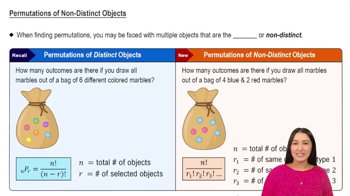Here are the essential concepts you must grasp in order to answer the question correctly.
Feasible Region
The feasible region is the set of all possible points that satisfy the constraints of a linear programming problem. It is typically represented graphically as a polygon on a coordinate plane, where each vertex corresponds to a potential solution. Understanding this region is crucial for identifying where the objective function can achieve its maximum or minimum values.
Recommended video:
Probability of Non-Mutually Exclusive Events Example
Objective Function
An objective function is a mathematical expression that defines the goal of a linear programming problem, typically to maximize or minimize a certain quantity. In this case, the objective function is given as 3x + 5y, which represents a linear relationship between the variables x and y. Evaluating this function at the vertices of the feasible region helps determine the optimal solutions.
Recommended video:
Permutations of Non-Distinct Objects
Vertices of the Feasible Region
The vertices of the feasible region are the corner points of the polygon formed by the constraints in a linear programming problem. These points are critical because, according to the Fundamental Theorem of Linear Programming, the maximum and minimum values of the objective function will occur at one of these vertices. Analyzing these points allows for the determination of the best possible outcomes for the objective function.
Recommended video:
Foci and Vertices of an Ellipse
 Verified step by step guidance
Verified step by step guidance Verified Solution
Verified Solution



 7:2m
7:2m